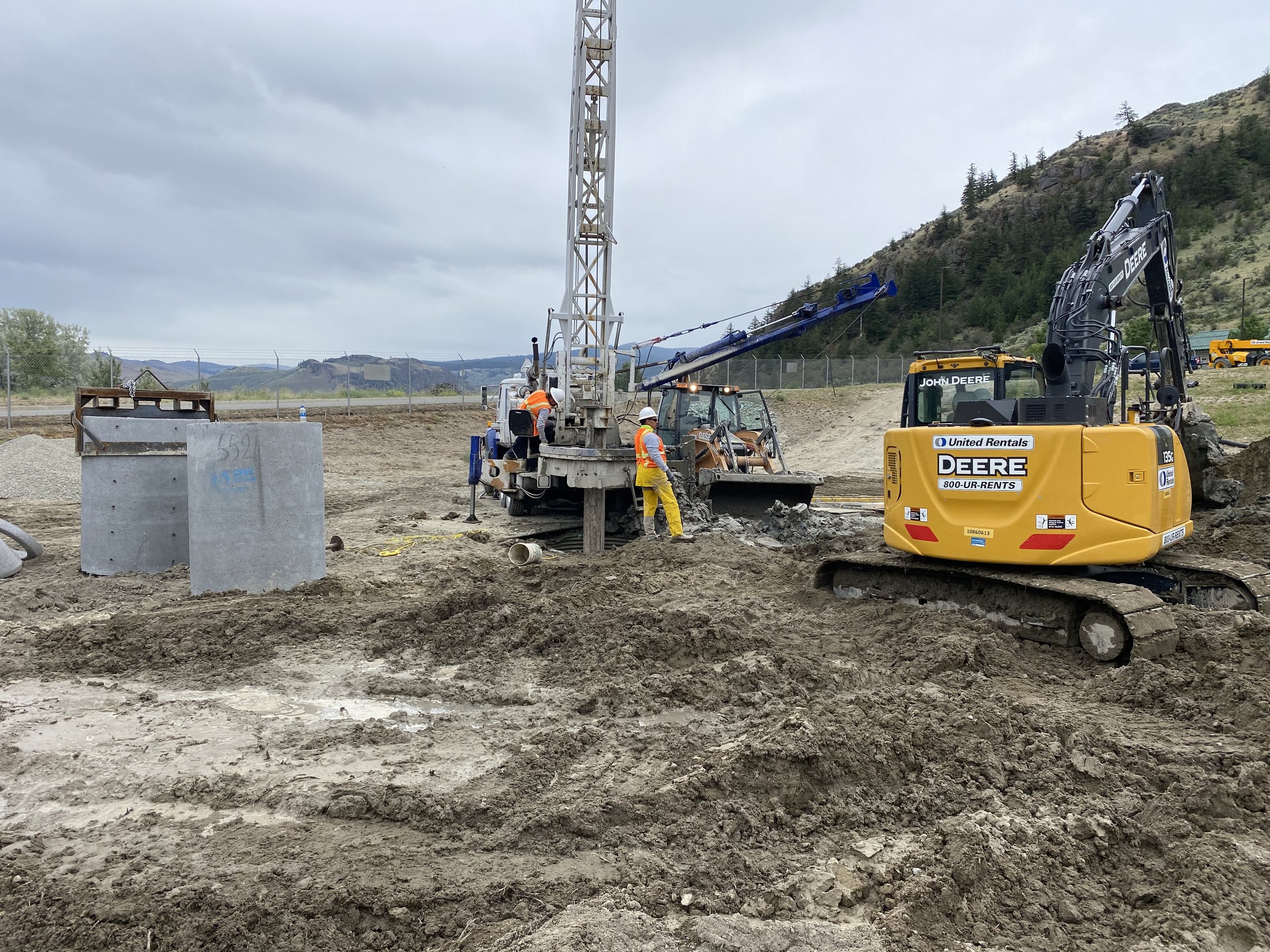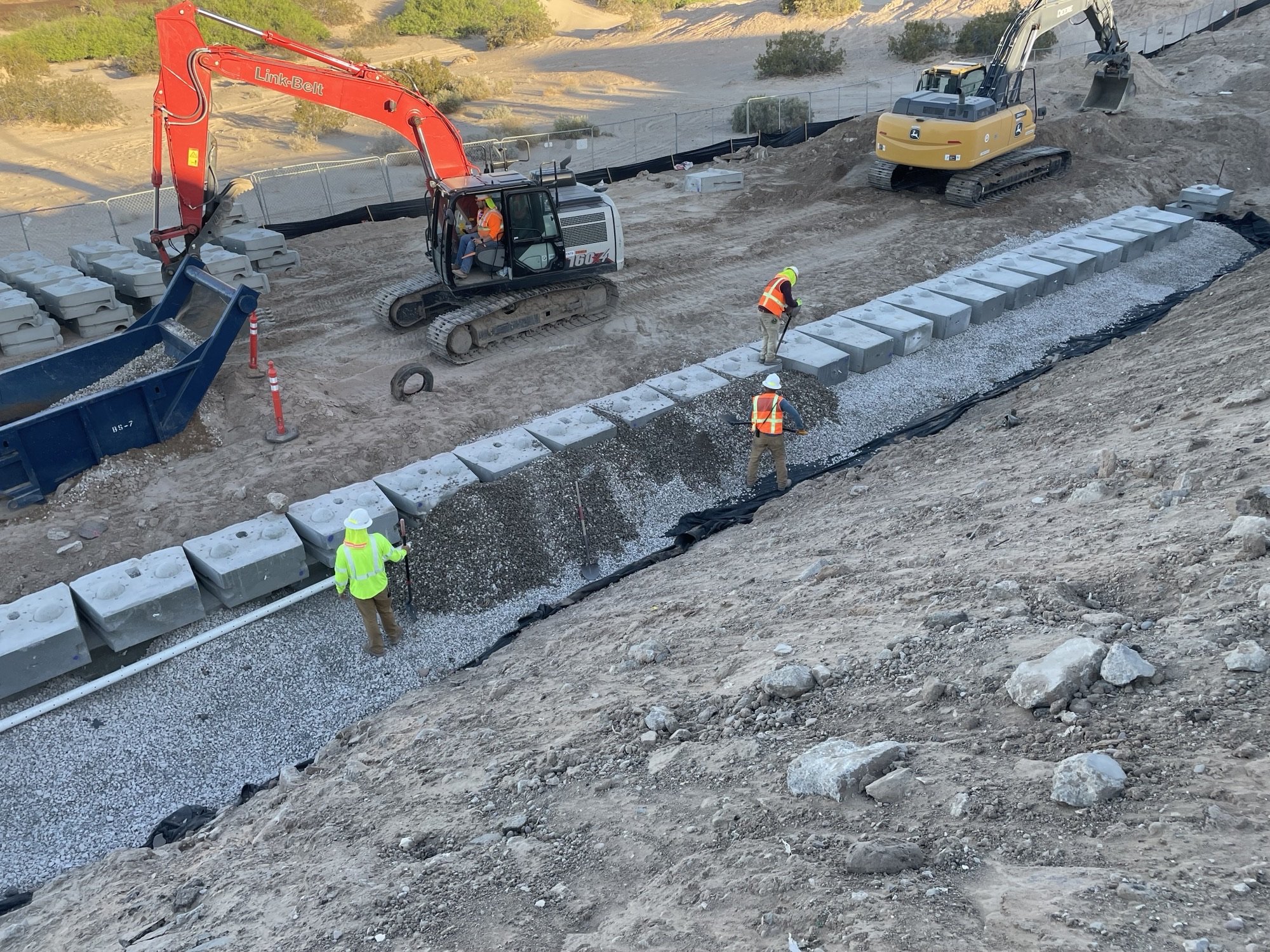REMEDIATION
ENVIROMENTAL & RESTORATION
Preliminary Assessment | Site Investigation
Remedial Investigation | Feasibility Studies
Demolition and Decommissioning
Remedial DesigN
OPERATIONS AND MAINTENANCE
LONG-TERM MONITORING
PROPERTY TRANSFER
COMMUNITY RELATIONS
ENVIRONMENTAL DATA MANAGEMENT



SERVICES
ENERGY & ELECTRICAL
POWER GENERATION, OPERATIONS AND MAINTENANCE
SITE INVESTIGATIONS, SYSTEM EVALUATION AND FEASIBILITY STUDIES
DESIGN, INSTALLATION AND DECOMMISSIONING
DESIGN/BUILD
NEW CONSTRUCTIONS, ADDITIONS AND RENOVATIONS
MAINTENANCE, ALTERATIONS AND REPAIRS
ENERGY-EFFICIENT RETROFITS AND UPGRADES
ESRI GIS DATABASE DEVELOPMENT OF UTILITIES SYSTEMS
PROJECT MANAGEMENT AND REPORTING
DEMAND SIDE MANAGEMENT
RENEWABLE ENERGY INTEGRATION
UTILITY ENERGY MANAGEMENT
RENEWABLE ENERGY GENERATION - SMALL HYDRO, WIND, PV SOLAR AND BATTERY STORAGE
TRANSMISSION AND DISTRIBUTION LINE INSTALLATION
SUBSTATION DESIGN AND CONSTRUCTION
RENEWABLE ENERGY CREDITS
DIESEL GEN SET DESIGN AND IMPLEMENTATION


RESTORATION
STREAM, FISHERIES, AND HABITAT
HABITAT, RIPARIAN, NATURAL FLOW, AND WATERSHED RESTORATION AND ENHANCEMENT
STREAM MODIFICATION TO ADDRESS QUALITY, VELOCITY, TEMPERATURE AND DEPTH
FISH PASSAGE, HYDROLOGIC ALTERATION, STAGING AN RESTING POINTS, AND HABITAT PROTECTION
SELECTIVE STREAM SEDIMENT AND STACKED BOULDER REVETMENT TO CREATE BACK EDDIES, RILLS, VELOCITY CHANGES, AND PROTECTION FROM STRESSORS SUCH AS PREDATORS
STREAMBED STABILIZATION, RE-CONTOURING PLANTING, AND MITIGATION OF AGRICULTURAL IMPACTS (STREAM BANK EROSION FROM WATERING OF CATTLE)
INSTALLATION OF FARMERS CONSERVATION ALLIANCE SCREENS FOR IRRIGATION, AGRICULTURE, AND HYDROPOWER (THE FCA SCREEN ALLOWS SEPARATION OF AQUATIC LIFE FROM ENTERING THE INTAKE STRUCTURE)
INSTALLATION OF ENGINEERED LOG JAMS, FLOOD PLAIN ROUGHNESS, AND CATCHER’S MITT
IN-WATER INFRASTRUCTURE REMOVAL, REPAIR, REHABILITATION, AND DEMOLITION OF CONCRETE AND STEEL STRUCTURES
UTILIZATION OF ALTERNATIVE CONSTRUCTIVE METHODS TO PROTECT, PRESERVE AND MINIMIZE IMPACTS TO SENSITIVE HABITAT, RIVER CROSSINGS, AND RIPARIAN ZONES
SINGLE POINT CONSTRUCTION ACCESS, OFF-STREAM STAGING, USE OF ENVIRONMENTALLY SENSITIVE/BIO-BASED OIL, LUBRICANTS, GREASE IN CONSTRUCTION EQUIPMENT AND PRESSURE-SENSITIVE TRACKED TRUCKS
COFFER DAM CONSTRUCTION, LEVEE REPAIR, RIP RAP REPAIR, STACKED ROCK WALL REPAIRS
BY-PASS WATER CONTROL, DEWATERING POINTS AND PLANS








CONSTRUCTION
HEAVY CIVIL & PUBLIC WORKS
INITIAL PRE-FEASIBILITY, FEASIBILITY, CONCEPT AND SITE SELECTION STUDIES
CONSTRUCTABILITY REVIEWS TO AACE INTERNATIONAL RECOMMENDED PRACTICE NO. 18R-97 AND TO THE STANDARDS OF CONSTRUCTION MANAGEMENT ASSOCIATION OF AMERICA (CMAA)
ENGINEERING SERVICES
ENVIRONMENTAL REMEDIATION SERVICES
EMERGENCY RESPONSE TO FLOOD CONTROL PROJECT
LEVEE, GATES, INTAKE STRUCTURES, FISH SCREENS
CONCRETE, GROUTING AND DEMOLITION SERVICES
STREAM, HABITAT RESTORATION OF CONSERVATION EASEMENTS, ENVIRONMENTALLY SENSITIVE RIPARIAN, ESA LISTED SPECIES
INSTALLATION OF BIO-GAS HDPE PIPELINES
FISH HATCHERY CONSTRUCTION
DESIGN/BUILD FOR HORIZONTAL CONSTRUCTION
WATER RESOURCES PROJECTS - ENGINEERED LOG JAMS, COFFER DAMS, DEWATERING AND BY-PASS
EXCAVATION, SITE-PREPARATION AND COMPLEX DEWATERING PROJECTS
AQUACULTURE AND FISHERIES CONSTRUCTION PROJECTS







Ice Harbor Dam Coffer Cell 4 Repairs
The work featured in the gallery above consists of repairing the furthest upstream coffer cell on the downstream side of the navigation lock at Ice Harbor Dam. The repair work will consist of performing an underwater inspection of the area then placing rock fill material around the base of the coffer cell. The rock fill material will be used to fill low spots and create a smooth surface. Bundles of interlocking concrete jacks, up to two bundles high and two bundles wide, will then be placed circling the coffer cell on top of the rock fill and river bottom. This work consisted of filling large voids at the base of the structure, preventing the loss of material from inside the cell, and stopping future scouring. All repair work was performed underwater, taking place from a barge during the Ice Harbor NAVlock in-water work window of December 2024 to February 2025. The water depth at this location is up to approximately 40 feet deep.
For this effort 143 tons of aggregate quarry spalls and 1,485 – 24” A-Jacks were placed over a 7 day in-water window. Inspections were completed by the divers as the materials were placed. Subcontractors for this effort included North Bank Civil and Marine and Cascade Diving Company.
MANAGEMENT
CONSTRUCTION AND CQM SERVICES
ARS approach to Owner Representation Construction Management and Construction Quality Management (CQM) services is a “start-to-finish” dedicated single-point of contact with the Owner, for the purposes of managing schedule continuity, institutional history, and effective project completion. We provide the “checks and balances” between the Owner, Prime Contractor, and the Design Engineer. Our managers have 18 to 20 years of working experience as a minimum and understand the “design/build” philosophy approach.
Our Construction and Program Management is tailored to the specific needs of the Owner and/or the Project, following established guidelines for Owner Representation Construction Management methods. Some of the many challenges that are facing Owners who are implementing hydropower and in-water construction projects can include:
Contracting and project delivery methods
Cost and schedule control
Contractor and vendor selection
Stakeholder coordination
Document control
Engineering record drawing confirmation and annotation
Quality control, testing and inspection
Contract administration, invoice control, and field back-check of serviced completed by the contractor
Third party constructability review of design
Contract documentation, specification enforcement or alternative performance standards to meet intent
Permitting for in-water construction window(s)
Storm water erosion control monitoring
Coordination with the Design Engineer on alternative design(s) or “change of conditions”
Coordination with the utility, Planning and Zoning or other regulatory agencies
Dispute avoidance and claims resolution
Commissioning and start-up
Through direct participation with the Owner’s “decision making process,” ARS construction managers provide expertise, counsel and recommendations regarding:
The effective use of available or remaining funds/budget to complete a specific task, or entire project scope
Provide recommendations (based on industry experience) for “means and method approach” for effective delivery and completion of a specific task or phase on the project
Optimal or alternative scheduling option(s) for conflicting logistics, long lead times (port-to-port delivery), seasonal constraints, labor issues, etc.
Strategies to avoid schedule delays, scope creep, change of conditions, or claims
Alternative contracting or procurement options for time sensitive products, equipment, machinery, vendor selection, self-performance, etc.
Constructability review(s); and value-added engineering support and assistance on the discovery of bad ground, force majeure, or other unforeseen conditions not anticipated by either the Owner and/or the Design Engineer



As part of our process, ARS’ construction management team completes the administrative tasks of the construction project. By delegating these day-to-day tasks to the ARS construction team, it allows the Owner to concentrate on the much “larger duty” of effectively managing the entire project (and the related politics). These day-to-day tasks include:
PRECONSTRUCTION PHASE
Preparation of project related administrative documentation that can include:
Permits
Exhibits
Vendor sourcing
General schedule(s)
Schedule of values
Equipment and material sourcing
Preliminary construction budget(s)
Preparation of cost estimates for specific tasks, materials or vendors
Preparation of contracts, subcontracts, purchase orders and credit applications for signature approval
Drafting “Approval Submittals” to the Design Engineer of materials and alternative materials
Address questions from local entities or regulatory agencies
Preparation of related tracking and task budget excel spreadsheets
Safety programs - provide Owner with information regarding allocation of responsibilities, i.e. each contractor is responsible for their safety
Construction support to the Design Engineer on plans, specifications, submittals and questions
Assist Owner in selecting third party inspection or testing laboratories
Analyze local labor availability and qualifications
Conduct pre-bid meetings with vendors
Bid review and make recommendations to the Owner regarding acceptance of rejection of specific bids or all bids
CONSTRUCTION PHASE
Hold pre-construction conference
Issue “notice to proceed” after Owner approval
Conduct and/or attend Contractors tailgate safety briefings, document meetings
Prepare daily and weekly progress reports
Photo document construction work
Attend/conduct weekly progress meetings and prepare meeting minutes to the Owner, Contractor and Design Engineer
Assist Contractor and Design Engineer with RFI’s and document changes
Back check and document equipment and material deliveries to the site
Process monthly applications for payment, with QC back-check of field status
Check shop drawings and document progress to the Design Engineer
Maintain on-site and on-line “drop box” construction document(s) filing system
Coordinate and observe any specialized inspection and testing
Document failures and coordinate corrections or re-testing
Coordinate “temporary” facilities - job trailers, utilities, staging, access and trash collection
Monitor and inspect storm water erosion control “best management products,” document and report inspection
Coordinate field inspections with P&Z inspectors, agencies or regulatory
Prepare pre/final punch lists
Close up P&Z permits, submittals, etc.
Secure copies of warranties and guarantees for the Owner
Review final application for payment
Draft “record drawings” changes
Ready to CONTRACT WITH US?
Drop Us a Line.


